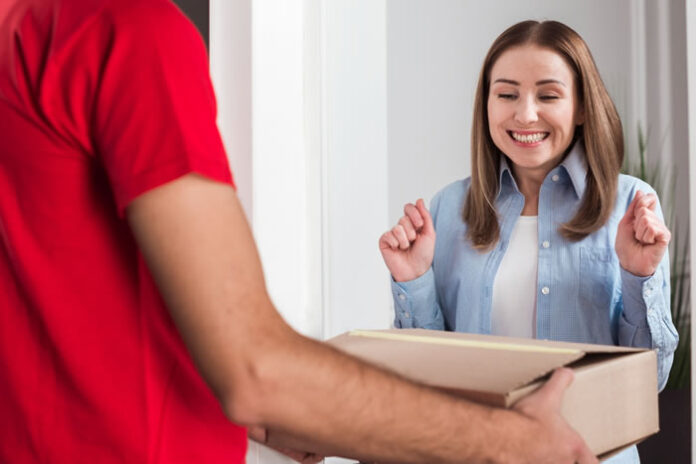The retail landscape is rapidly changing due to the consumer’s desire for speed and instant gratification. Last-mile delivery, in particular, has evolved as a result of the paradigm shift caused by food delivery and Amazon Prime, which raised people’s expectations of delivery. For example, a person can order and have their meal delivered to them in 45 minutes. Similarly, most Amazon purchases are delivered the same or next day. Customers, unsurprisingly, reacted favorably to this level of instant gratification and want it applied to all sectors of retail delivery for the brands they interact with. This need for an optimized last-mile delivery model is now consumer-driven and has transcended into every touchpoint for retailers. Below are key benefits to incorporating last-mile delivery into a retail strategy.
Last-mile delivery is essential because it focuses on customer experience at its core while streamlining and bringing efficiency to the whole process to balance the unit economics of the distribution channel. This holistic, orchestrated delivery approach provides retailers with insights on every aspect of their digital interaction with consumers, such as inventory, last-mile fulfillment, post-purchase experience, etc., enabling exceptional data-driven customer service, and ultimately a solid retail strategy.
Machine Learning Capabilities
Retailers are turning to companies such as Delivery Solutions that can provide a robust single API and dashboard for last-mile delivery orchestration with “self-healing” capabilities that bring reliability to last-mile performance across its SaaS platform. The comprehensive strategy to orchestrated delivery is based on service capability, quality, rate shopping, etc. among numerous delivery providers to get the best-matched delivery option for each transaction. For example, once a retail partner selects the criteria and services that fit their business requirements on the dashboard, the delivery orchestration takes place behind the scenes seamlessly to present appropriate options to the front-end customer.
Self-healing, a crucial machine learning component, eliminates the need for merchants to manually cancel, reconstruct, and notify the delivery provider of modifications or fulfillment issues. The platform can provide the ideal end result for both the provider and the consumer in order to fulfill the promise of same-day delivery while predicting any difficulties and pivoting automatically to avoid delays. Using this retail strategy is especially critical for preventing losses and unforeseen risks to distribution and supply chain channels, as it allows the business to stay focused on the customer.
Convenient Delivery Options
Most retailers take a single-view approach to delivery, only focusing on a small subset of options or select providers. In contrast, complete last-mile adaptation allows retailers to provide comprehensive fulfillment options, including same-day delivery, scheduled delivery, in-store and curbside pickup, at-home delivery, ship from store, and buy-online-pick-up-anywhere (BOPA). With so many options, customers can select which one best fits their needs, customizing their shopping experience even further.
Package Protection Against Porch Pirates and Theft
Last-mile delivery options, including the popular BOPA, are facilitated through third-party technology to reduce package theft. Customers have the option to have their products delivered to secure storage lockers at various convenient locations around their immediate area. For example, if a customer has to run errands or work from their office, they can choose a locker location that is on their way back home or have their packages delivered to their office. Similarly, customers can also select more specific, smaller home delivery windows, ensuring their packages are delivered when they know they’ll be home to retrieve them. These options provide safer alternatives to leaving packages unattended and unguarded on front porches, and overall retail strategy.
Post-Purchase Customer Communication
While last-mile delivery is the main focus, retailers should also consider customer satisfaction after a package has reached its destination. A holistic approach to last-mile delivery allows retailers to monitor the post-purchase experience as well. This technology manages intelligent communication with regards to the transaction and delivery process, such as retail-branded tracking pages, personalizations, order confirmation emails, issue notifications and delivery updates.
Customers who are kept in the loop regarding delivery are more likely to prioritize safely gathering the package rather than leaving it unattended for long stretches of time. With the help of platforms like Delivery Solutions, retailers can experience the next-generation post-purchase solution that eliminates customer dissatisfaction and streamlines order-related communications. Data shows that customers will not shop from a business again after one bad experience, with 72.5 percent of poor deliveries resulting in a customer no longer recommending that retailer. This technology not only benefits the customer because whenever there is customer confidence and satisfaction, but the retailer will also in turn benefit. Customers will gravitate to retailers who fulfill their need for instant gratification, provide them with convenient delivery options, and keep them informed every step of the way. Last-mile orchestration accomplishes all this, leading to increased customer satisfaction and retention, which are the cornerstones of a successful retail strategy.















